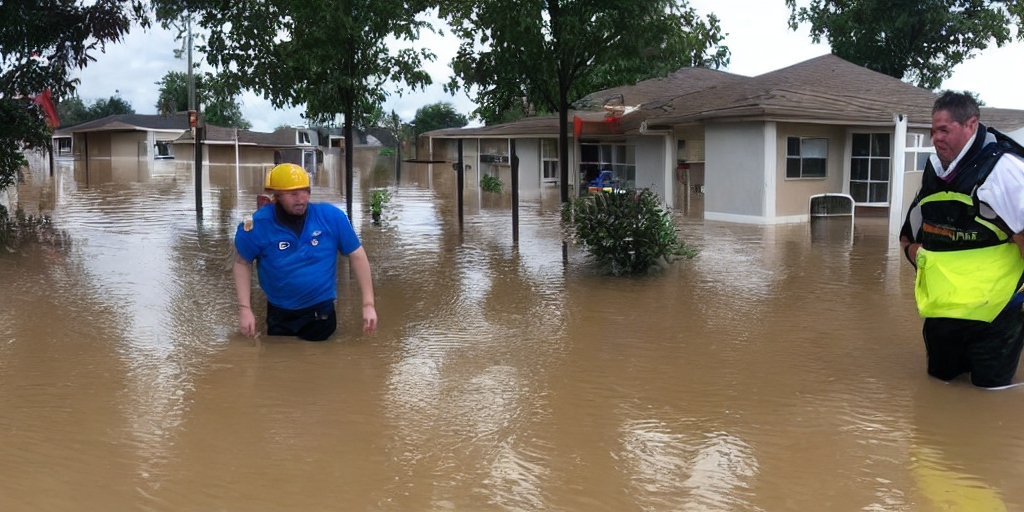Introduction
Water damage can wreak havoc on homes and businesses, leading to a myriad of issues that require immediate attention. In such situations, the importance of professional water damage remediation services cannot be overstated. This article will delve into the processes involved, differentiate between mitigation, remediation, and restoration, explore the offerings of SERVPRO, and provide insights into the removal of water damage from residential properties.
Understanding Water Remediation Processes:
When faced with water damage, the remediation process becomes pivotal. Water damage remediation services encompass a series of steps designed to mitigate the impact of water and restore the affected property. These processes typically include assessment, water extraction, drying and dehumidification, cleaning and sanitizing, and finally, restoration.
- Assessment: Before any remediation begins, a thorough assessment is conducted to determine the extent of the damage. This step is crucial in developing a tailored plan for effective remediation.
- Water Extraction: The next step involves the extraction of water from the affected area. Powerful pumps and vacuums are used to remove standing water quickly, preventing further damage.
- Drying and Dehumidification: Once the excess water is removed, the drying process begins. Industrial-grade dehumidifiers and specialized drying equipment are employed to eliminate moisture and prevent mold growth.
- Cleaning and Sanitizing: After drying, the remediation team cleans and sanitizes the area. This helps in preventing the growth of bacteria and ensuring a safe environment for occupants.
- Restoration: The final phase involves restoring the property to its pre-damaged state. This may include minor repairs or, in severe cases, extensive reconstruction.
Also Read: Comprehensive Guide to Water Damage Remediation Services
Mitigation vs. Remediation vs. Restoration:
It’s essential to clarify the distinctions between mitigation, remediation, and restoration to understand the complete spectrum of services.
- Mitigation: Mitigation refers to the immediate actions taken to prevent further damage after an incident. It focuses on minimizing the initial impact and is often the first step in the overall remediation process.
- Remediation: Remediation is the comprehensive process of reversing or stopping damage. It involves the complete restoration of the affected area to its pre-damaged condition.
- Restoration: Restoration is the final step, concentrating on returning the property to its original state. This may include aesthetic repairs and rebuilding structures that were damaged or removed during the remediation process.
SERVPRO’s Role in Water Damage Remediation
One commonly recognized name in the field of water damage remediation services is SERVPRO. While SERVPRO specializes in restoration services, including water damage remediation, it’s important to note that fixing water leaks might not be their primary focus. SERVPRO’s expertise lies in the thorough restoration of properties affected by water damage, ensuring that the remediation process is comprehensive and effective.
Removing Water Damage from Residential Properties

Residential water damage can be a distressing experience for homeowners. Here are some general steps involved in removing water damage from houses:
- Identify and Stop the Source: The first crucial step is to identify and stop the source of water. This may involve fixing leaks, repairing broken pipes, or addressing any other issues causing water entry.
- Assessment and Documentation: Conduct a thorough assessment of the damage and document the affected areas. This documentation can be valuable for insurance claims and the remediation process.
- Water Extraction: Swiftly remove standing water using pumps and vacuums to prevent further damage and the onset of mold growth.
- Drying and Dehumidification: Employ specialized equipment to dry the affected areas and reduce humidity, preventing mold and mildew.
- Cleaning and Restoration: Clean and sanitize the impacted areas, and proceed with restoration work, which may include repairing or replacing damaged materials and structures.
Also Read: Understanding the Vital Role of Water Remediation Services in Protecting Your Home
Conclusion
In conclusion, when faced with water damage, seeking professional water damage remediation services is imperative. Understanding the processes involved, differentiating between mitigation, remediation, and restoration, and knowing the role of reputable companies like SERVPRO can make a significant difference. For residential water damage, a swift and comprehensive approach, including identifying the source, extraction, drying, and restoration, is key to restoring homes to their pre-damaged condition. For the best results, consider reaching out to trusted professionals in your area for assistance.










